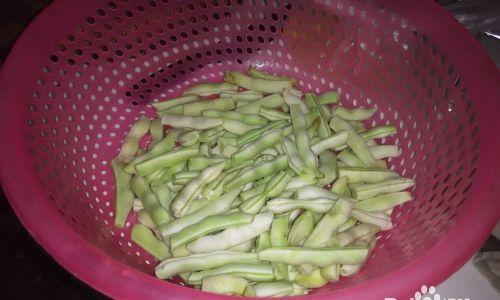Table of content
Making homemade soy milk is not only a rewarding culinary endeavor but also a fantastic way to ensure you consume a nutritious and fresh beverage. Unlike store-bought versions, homemade soy milk allows you to control the sweetness, texture, and even add your favorite ingredients for a personalized touch. Whether you’re looking to embrace a plant-based lifestyle, reduce your carbon footprint, or simply enjoy the rich, creamy taste of soy milk, this guide will walk you through the process step-by-step, ensuring your homemade soy milk is both delicious and satisfying.
Understanding the Basics
Before diving into the recipe, it’s crucial to understand the basics of soy milk making. Soybeans are the primary ingredient, packed with protein, fiber, vitamins, and minerals. The process involves soaking, blending, straining, and sometimes cooking the soybeans to extract their creamy goodness. The quality of your soybeans can significantly impact the final taste, so opt for non-GMO, organic soybeans whenever possible.

Equipment You’ll Need
- Soaking Container: A large bowl or pot for soaking the soybeans overnight.
- Blender: A high-powered blender is ideal, but a standard one can also work.
- Cheesecloth or Nut Milk Bag: Essential for straining out the pulp.
- Large Pot: For cooking the soy milk if desired.
- Measuring Cups and Spoons: For precise ingredient measurements.
- Strainer: For rinsing the soaked soybeans.
- Storage Containers: Glass jars with tight-fitting lids are best for storing your fresh soy milk.
Ingredients
- 1 cup dried soybeans
- 4-6 cups water (for soaking and blending)
- A pinch of salt (optional, for enhancing flavor)
- Sweetener (such as honey, maple syrup, or agave nectar, to taste)
- Vanilla extract or other flavorings (optional, for added depth)
Step-by-Step Guide
Soaking the Soybeans
The first step in making soy milk is soaking the soybeans. This process softens the beans, making them easier to blend and helps remove some of the natural phytates and enzymes that can cause digestive discomfort.
- Rinse the soybeans under cold running water to remove any dirt or debris.
- Place them in a large bowl or pot.
- Cover with at least 4 cups of water (or enough to fully submerge the beans by about 2 inches).
- Soak overnight, preferably in a cool, dark place. If you’re in a rush, you can use the quick soak method: bring the beans and water to a boil, then remove from heat, cover, and let sit for 1-2 hours.
Preparing the Soybeans
After soaking, the soybeans will have expanded and softened.
- Drain and rinse the soaked soybeans thoroughly.
- Inspect and remove any discolored or hard beans.
Blending the Soybeans
Now it’s time to blend the soybeans into a creamy liquid.
- Transfer the rinsed soybeans to your blender.
- Add 4-6 cups of fresh water, depending on how thick or thin you prefer your soy milk. Generally, more water will yield a thinner soy milk.
- Blend on high speed for about 2-3 minutes, or until the mixture is completely smooth. If your blender struggles, you may need to blend in batches or add more water.
Straining the Soy Milk
Straining is crucial for separating the creamy soy milk from the fibrous pulp.
- Line a strainer or colander with cheesecloth or a nut milk bag.
- Pour the blended soy mixture into the lined strainer slowly, allowing the liquid to drip through into a large pot or bowl below.
- Gather the edges of the cheesecloth or bag and gently squeeze to extract as much liquid as possible without forcing any pulp through.
Cooking the Soy Milk (Optional)
While some prefer to drink their soy milk raw, cooking it can enhance its flavor and safety, especially if you’re concerned about bacteria.

- Transfer the strained soy milk to a clean pot.
- Heat over medium-low heat, stirring occasionally, until it reaches a gentle simmer. Do not boil vigorously as this can cause the soy milk to curdle.
- Remove from heat once it reaches a simmer and let it cool slightly.
Seasoning and Flavoring
Now it’s time to customize your soy milk to taste.
- Add a pinch of salt to enhance flavor, if desired.
- Sweeten with your choice of sweetener, starting with a small amount and tasting until you reach your desired sweetness.
- Flavor with a few drops of vanilla extract, cinnamon, or any other spices or extracts you enjoy.
Cooling and Storing
Once seasoned, let your soy milk cool to room temperature before refrigerating.
- Pour into glass jars with tight-fitting lids.
- Refrigerate for at least 2 hours before serving. Homemade soy milk will keep in the refrigerator for up to 3-4 days.
Tips for Making Delicious Soy Milk
- Experiment with Water Ratio: The amount of water you use will affect the consistency of your soy milk. Start with 4 cups and adjust based on your preference.
- Use Fresh Ingredients: Always use fresh, high-quality soybeans for the best flavor.
- Strain Thoroughly: Ensuring all the pulp is removed will give you a smoother, creamier soy milk.
- Customize Your Flavors: Don’t be afraid to experiment with different sweeteners, spices, and extracts to find your perfect blend.
- Homogenize for Smoothness: If you have an immersion blender or a high-powered blender with a tamper, you can pass the soy milk through it again after straining to achieve an ultra-smooth texture.
- Non-Dairy Creamer: For a richer, more indulgent soy milk, you can add a small amount of coconut oil or another neutral-flavored oil during blending.
Conclusion
Making homemade soy milk is a rewarding process that allows you to control the quality, flavor, and nutritional content of your beverage. With just a few simple ingredients and a bit of time, you can enjoy fresh, delicious soy milk tailored to your taste preferences. Whether you’re looking to incorporate more plant-based foods into your diet, reduce your environmental impact, or simply enjoy a creamy, nutritious drink, homemade soy milk is a fantastic option. So, gather your ingredients, follow the steps outlined above, and start enjoying the deliciousness of homemade soy milk today!






0 comments